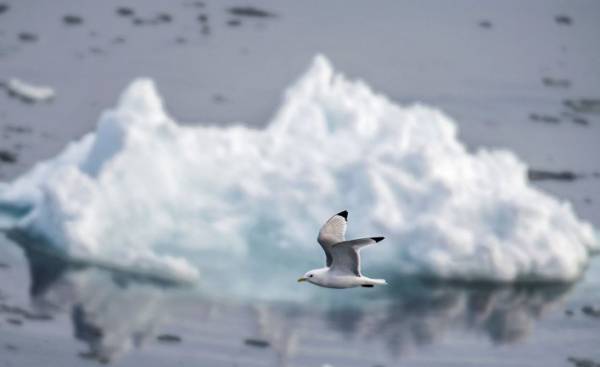
Creating in Russia a gigantic research submarine to navigate under the ice, by mapping the topography of the sea bottom by means of two huge, similar to the rudders of the wings. This submarine will help Moscow to explore remote areas of the Arctic, so that later she could move to the development of its untouched natural resources.
Arctic research submarine was designed in the famous “KB Rubin”, which also created the world’s largest nuclear submarines of project 941 “Akula”. The ship will weigh 13 280 tons and will probably be the largest civilian research submarine in history, as its length is 134 meters. It will reach a maximum speed 12,6 knot, and her crew will be 40 people.
The most striking feature of the boat is two sets like the wings of hydroacoustic receivers. The presence of such wings give the boat some fantastic views. “Wings” will get into the body like the blade of a folding knife. They are designed to receive signals from the sonar placed in the hull. This will allow Arctic research submarine to form the image of the sea bottom in all directions while moving under water at low speed to three knots.
Analyst G. Sutton, who created a website about submarines Covert Shores (Secret shore) and wrote the same book, talks about the Arctic submarine: “Analysis of the layout submitted by the design office, shows that the length of the wing design is close to 50 meters, and thus, the wingspan is 100 meters. It is much larger than any built today on the plane.” Sutton, who made the drawings from which it becomes clear that the scope of the “wings” of the boat will be even bigger than the Airbus A380.
However, Sutton is confident that the wings will be no hydrodynamic purpose. “Wings are unlikely to be used to generate lift, like an airplane. It will be ineffective, as it will always have to use rudder control to keep the boat at a predetermined depth. In addition, they will create noise, because of what sonar will become less effective.”
The submarine is built specifically for sailing under the Arctic ice, but because of the huge size to manage it sometimes will be difficult. “In the Arctic ocean there are many places where this boat will not work because it is too long wings, and it will hurt them the ice columns descending down from the ice surface, explains Sutton. They can descend hundreds of meters and even to reach the bottom.”
Since the boat of civil, she will not have any weapons. It will host unmanned underwater vehicles (drones), and it can dive to a depth of 400 metres.
Russia is fully determined to secure for itself the right to extract minerals and energy resources in the Arctic, in areas that will become accessible due to global warming, reducing the area of pack-ice. Moscow said bold territorial claims in the Arctic ocean areas, extending far beyond the 200-mile economic zone. But they claim many other countries, and some of them even want to own the North pole. Sutton notes that in 2007, Russia using mini-submarines had planted their flag on the seabed of the North pole at a depth of over four thousand meters.







